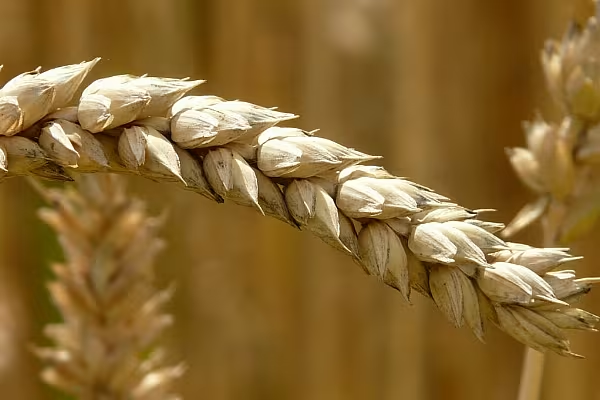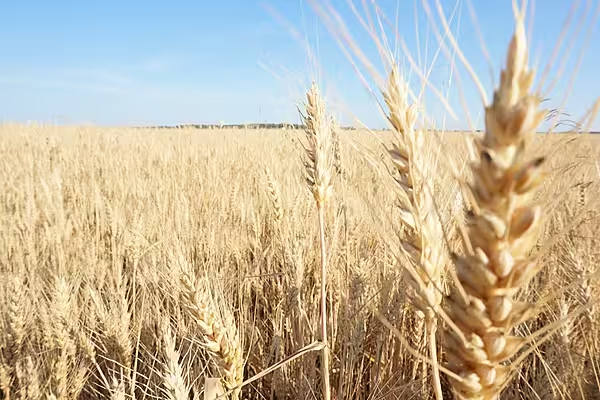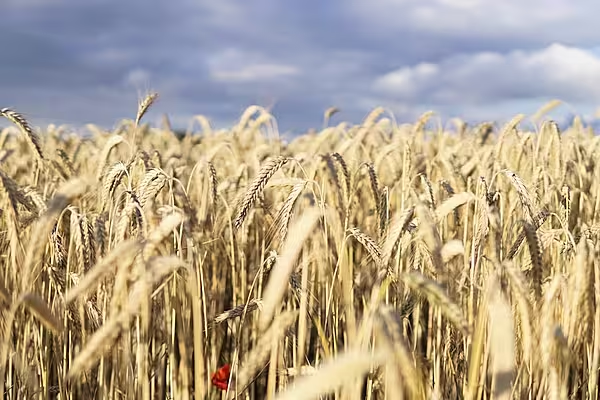Brazil long ago cemented itself as a leading world supplier of soybeans and corn, but wheat may increasingly edge its way into the country's shipping lineup as farmers plant a record area in the coming months, taking advantage of high prices and attractive profitability.
The South American country harvested a record wheat crop last year, which combined with strong global demand should help Brazil's wheat exports reach at least 11-year highs in the current 2021-22 season, if not a record.
Brazil has a long way to go before competing with top global wheat suppliers, as it will account for just 1% of all shipments in 2021-22. But that share could increase with a bigger crop and continued displacement of Black Sea wheat customers.
Global wheat prices hit record levels last month following No. 1 exporter Russia's invasion of Ukraine, another key exporter.
That allowed some peripheral wheat suppliers like Brazil and India to increase shipments, which was necessary as wheat stocks among major exporters were already near historical lows before the Ukrainian conflict.
Importer And Exporter
Brazil's rising role in wheat exports is unique in that it is actually a major importer of the grain, primarily duty-free from Argentina. Brazil exports wheat based on market conditions, and those should allow for expansion in the coming year.
The US Department of Agriculture's Brazilian attache on Tuesday pegged Brazil's 2022-23 wheat crop at 8.8 million tonnes and exports at 3 million, both records and up a respective 14% and 7% on the year.
Those shipments pale in comparison to Russia's typical exports above 35 million tonnes and Ukraine's near 18 million.
However, some of Brazil's leading wheat buyers in recent months also usually top Ukraine's list, including Indonesia, Morocco and Pakistan.
None of the major wheat exporters also import similarly large quantities, excluding intra-European Union trade, but secondary suppliers including Brazil and Turkey import more than they export.
Wheat Exports
India, which will set a wheat export record in 2021-22, has also been an on-and-off importer and exporter of wheat pending market circumstances.
The South Asian country is set for a sixth-straight bumper crop in 2022-23, so it can likely continue subbing in for any potential Black Sea shortfalls into 2023 if needed.
However, both India and Brazil's on-off wheat export status means they may not be permanent fixtures in the market. Instead, their participation will be tied to the success of their crops, which includes planting incentives.
Brazil is already a well-established player in global agriculture. It is the world's leading exporter of soybeans, coffee, sugar, chicken and beef, and it is near the top in corn, cotton and pork.
Getting To Know The Crop
More than 80% of Brazil's wheat is grown in the southern states of Parana and Rio Grande do Sul, also key producers of soybeans and corn. Wheat is sown primarily in May and June, and it competes with second-crop corn in parts of Parana.
Brazilian agriculture relies heavily on imported fertiliser, which is extremely expensive right now and hard to obtain, and that has market participants cautious on general crop prospects ahead of Brazil's 2022-23 season.
Brazilian wheat growers are thought to have secured winter crop inputs before the conflict began in the Black Sea, although it is unclear if some producers will choose to save some inputs to use on corn and soybeans. Russia is Brazil's top source for fertiliser.
Brazil's wheat harvest starts in September and October, so favourable July and August weather is critical for strong yields. Southern Brazil is trying to rebound from a historic drought that ruined soybean crops earlier this year, especially in Rio Grande do Sul.
Last season, Brazil harvested a record 7.7 million tonnes or 283 million bushels, which is close to the recent five-year average of soft red winter wheat production in the United States. Soft red winter wheat accounts for 16% of the total US wheat crop.
Karen Braun is a market analyst for Reuters. Views expressed above are her own.
News by Reuters, edited by ESM – your source for the latest supply chain news. Click subscribe to sign up to ESM: European Supermarket Magazine.














